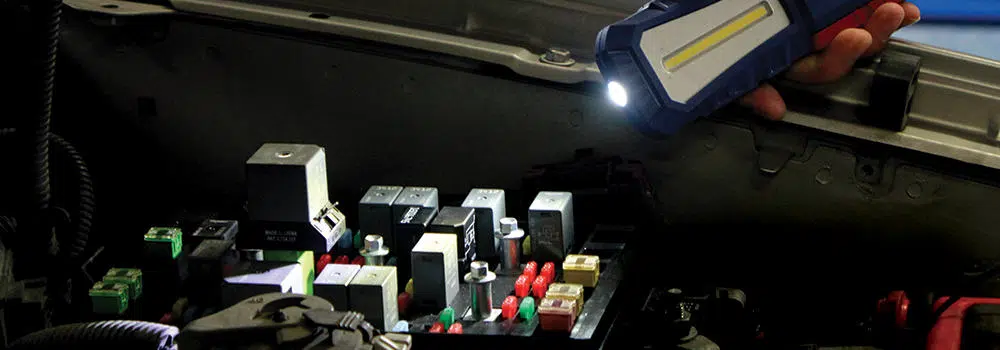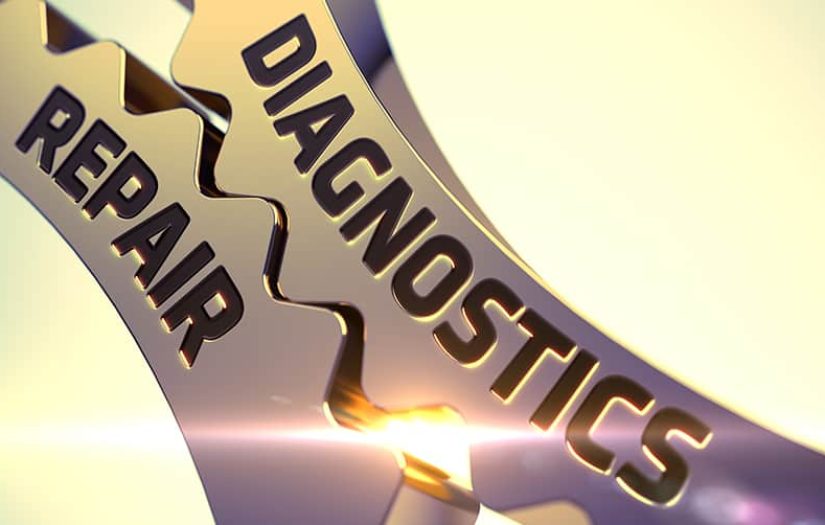Diagnosing modern vehicle charging systems is no easy task. As Albin Moore pointed out in a guest article several years ago, the days of checking alternator voltage output by confirming it within a predetermined window are mostly over. As smart charging systems have become the norm, resolving charging system problems and related power system issues has become more complex. As if that weren’t enough, there are still many mechanical issues related to alternator operation that can cause poor vehicle performance or result in a no start condition. This month, we have pulled together several resources related to charging system diagnosis and repair in an effort to help you stay up to date on this tricky area of vehicle service.
A Warning: Don’t Do It Like You Used To
“There was once a time when all a technician needed to diagnose a battery was a voltmeter. You could measure battery voltage, charging voltage and maybe perform a full field test. But charging systems have changed. The alternator is now managed by the ECM for loads and fuel economy. Testing now requires a scan tool.”
As he notes, modern alternator output, often controlled by an electronic module, is conditions based, such that an output of 13.0V might be correct or an output of 15+V could also be correct. It is important to know what the vehicle is commanding the alternator to output and then check the actual output against the desired level. Usually, this involves the use of a scan tool. He also identifies the ways that vehicle communications networks can impact alternator output, the pernicious damage excessive parasitic drains can have on battery health and the negative unintended consequences of using the battery positive and negative terminals for providing power and ground to aftermarket accessories added to the vehicle. In other words, he addresses many of the common themes we have touched on in this blog over the years as sources of trouble for the charging and starting system.
What Does It Mean When We Say “Smart” Charging?
Over the past 10 years or so, we have seen a major evolution of vehicle charging systems, away from the basic systems referenced above to “smart” systems that are driven by much more complex inputs. There are many reasons for this evolution, but the key causes are the increased electric and electronic loads of today’s vehicles (which make it impossible for the battery to keep up on its own), the goal of improved battery longevity (a more complex electrical system requires more complex management of the battery to avoid over- or under-charging situations) and the near constant search for improved fuel efficiency. But, what do we really mean when we refer to “smart” charging systems?
This article, by Jeff Taylor on AutoServiceProfessional.com, takes a stab at addressing that question and does a good job of differentiating between the different charging strategies deployed by today’s auto manufacturers. Right out of the shoot, he distinguishes between semi-smart systems and true smart charging systems:
“Computer-controlled voltage-based charging can be thought of as a semi-smart charging system. But when a charging system can watch the amperage in and out of the battery (amperage-based charging), it is considered a true smart charging system. Today’s smart charging systems are capable of many features and operational modes, including load shedding, start-up mode, battery sulfation mode, deceleration mode, fuel economy mode, windshield de-icing mode, and other features to optimize vehicle charging, emissions, performance, and fuel economy.”
From here, he breaks down the different approaches to smart charging currently deployed, citing the examples of Honda and Stellantis/FCA (Chrysler), noting that they both utilize smart charging systems but that the name is where the similarities end. He breaks down each approach, noting the service implications of each in the hopes that he can help the reader avoid misdiagnosis resulting from various system quirks. Examples include how the Battery Management Sensor integrates with the Honda charging system or the Stellantis Intelligent Battery Sensor (IBS) sends signals back to the PCM via the BCM. This is a rather deep dive into system operation, but it does a great job of highlighting the importance of knowing how the system is designed and its theory of operation. He wraps the article with a great summary as to why these system had to evolve:
“… as we have electrified so many systems on today’s vehicles, it has resulted in a substantial load on the charging system. By using a smart charging system that will continually supply the ideal voltage and amperage, all the electrical requirements of the modern vehicle can be met while boosting fuel economy, lowering emissions and increasing battery life.”
All This Talk About Electronics, What About Mechanical?
Modern alternator diagnostics lean heavily on the use of scan tools and knowledge of network design – in the above example, the article breaks down how, in the Stellantis design, the IBS is connected to the BCM via a LIN BUS, then the BCM communicates with the PCM via a CAN BUS. All this emphasis on modules, commands, network performance and trouble codes might make one think that the alternator is no longer a truly mechanical part. This article, by Dan Marinucci in Motor, will quickly dissuade you from that notion.
Here, Dan breaks down alternator pulley operation. He distinguishes between overrunning alternator pulley (OAP) designs and isolator decoupler pulley (IDP) designs. He then gets into how to diagnose a failed pulley system, identifying common systems and advanced strategies for system assessment, including how to spot a freewheeling clutch, a slipping clutch and partial slippage. This is a great one to bookmark for future reference.
Don’t Overlook the Basics (Fuses)
As he notes, “a Sprinter alternator output cable runs down along a crossmember under the engine and over to the starter solenoid. What’s more, Mercedes has spliced a 300A fuse into the alternator output cable at a spot below the oil pan. It’s easy to miss this fuse because it’s covered with heat-shrinkable tubing.”
He emphasizes the importance of vehicle history when diagnosing a no charge condition on these vehicles, since the most common cause of fuse failure is a reversed jump starter connection. Then, he goes on to identify why this repair can be more costly and time consuming than one might expect, which is a veritable laundry list of issues/challenges. He wraps with a great diagnostic strategy to identify fuse failure:
“Turn the vehicle on and power up as many accessories as possible.] Measure the voltage drop from the alternator output terminal over to the positive battery terminal. If it measures battery voltage, it means the output circuit opened up somewhere between the alternator and the battery. Now check your schematic for the presence of an alternator fuse. A blown fuse would be the prime suspect in this open-circuit situation.” Another bookmark worthy resource if you regularly service these vehicles.
Just like so many other vehicle systems, the charging system continues to become more complex with each model year, as vehicles ask the battery and power system to do more and more. Increased electrical and electronic loads require the OEs to deploy more advanced power management strategies. That makes it increasingly difficult to get to the root of charging system issues on the first try. Understanding system operation and having a logical diagnostic game plan are critical when it comes to resolving these electrical system issues effectively and efficiently. We hope these resources are helpful for you in the never-ending quest to keep up with evolving charging system designs.
Have you run into a particularly difficult charging system repair? A no charge situation that left you scratching your head or a vehicle that has worn down several batteries prematurely until the root cause of the issue could be identified and resolved? We’d love to hear about how you solved those diagnostic dilemmas in the comments below.







